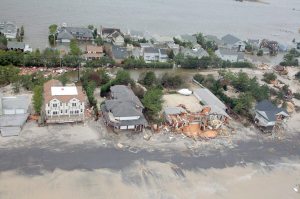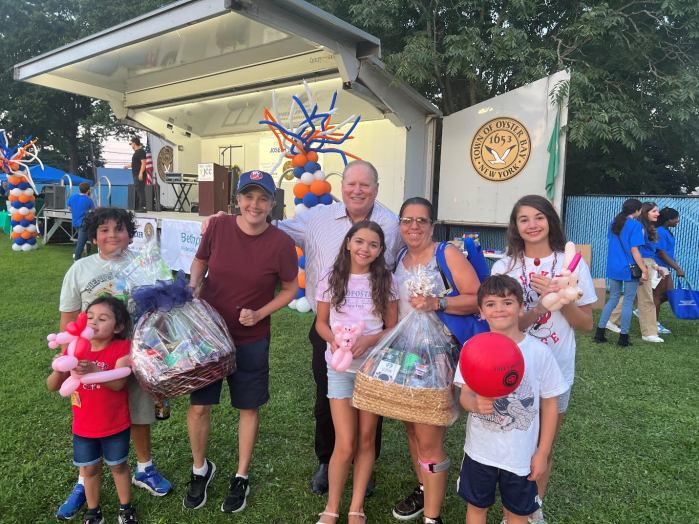
When disaster strikes, it’s always when you’re least expecting it. When it happens, a little know-how can mean the difference between life and death to a well-prepared individual.
At the Jericho Public Library, Captain Rafael Castillo of the Army National Guard recently hosted a Citizen Preparedness Corps instructional course for local area residents as a way of readying them to face a multitude of threats, ranging from hurricanes and power outages all the way to an terrorist attack and more.
“Citizen preparedness training is basically an emergency preparedness class. Governor Andrew Cuomo got this started after the events of Hurricane Sandy and Irene,” he said. “He put all the emergency agencies together and did a review. What did they do right? What did they do wrong? And based on the lessons that we learned, what can we do better to prepare the citizens of this state so they become less reliant on government agencies.”
Citizen preparedness classes are held throughout the state on a regular basis. Teaching New York residents how to take care of themselves in the event of a catastrophe, Castillo said, frees up the vital resources of first responders so that they are able to concentrate on the truly vulnerable members of society that may require assistance, such as the elderly or the disabled.
“That’s what this presentation brings to the table,” he said. “It’s a basic course on how to prepare, respond, and recover during natural, man-made and technological disasters.”
Castillo broke the basic facets of preparedness into four simple steps. The first step, he said, is to develop a plan instead of waiting for a disaster to happen and then reacting to it. By then, it’s already too late. Figure out an escape route and have a contact—such as a friend or family member—who lives outside of your general area that you can go stay with in the event that your neighborhood is not habitable.

Next is the building of a survival kit (or “go kit”) for every member of your household. Such a kit typically takes the form of a backpack filled with essential sustenance such as non-perishable food and clean water; hygiene items such as clean clothing, a toothbrush/toothpaste and any medication that you might require; and tools, including a flashlight with good batteries, maps, a cell phone charger and copies of any important documents that you would not want to see destroyed, either printed out or stored digitally on a flash drive.
Third, Castillo stressed the importance of simply being aware. Citizens can achieve this by signing up for a system called NY-ALERT at www.nyalert.gov, which can provide citizens with up-to-date information during an emergency by phone, text messages or email.
And finally, Castillo urged attendees at the course to get more involved with their communities if they aren’t already. By learning what programs for volunteers exist in the local area, residents can make a difference should the worst ever occur. And according to Castillo, the worst eventually will indeed occur.
“It’s not a matter of if,” he said. “It’s a matter of when. From terrorist activity to natural disasters, New York is at a higher threat level than the rest of the country. This isn’t to scare you. This is to just make you aware.”
All was not gloom and doom at the lecture, however. Castillo noted that some positive changes have been made to address the issues experienced by many New York residents during Superstorm Sandy. For example, rampant power outages in Sandy’s wake resulted in a severe fuel shortage, but this problem has since been addressed, he said.
“The governor put legislation into effect that, after Sandy, every new fuel station built must have a backup generator,” he said. “Existing fuel stations had one year to upgrade and get backup generators, so by now, there’s no reason why we should have to wait eight to 10 hours to get gas ever again in the event of an emergency.”
Ann Rubenstein is one of the many locals who attended the Citizen Preparedness Corps training and said that she took a great deal away from it in terms of knowing what
to do should civilization ever go on the blink.
“I needed motivation to start getting off my butt and start doing something about it, and that’s why I’m here today,” she said. “My friends had gone to one of these during the summer and she said it was very informational. It has the structure that I need so that I can get ready should something else happen along the lines of Sandy.”
Another attendee, Diane Beer, also thought the class was a great way to indoctrinate the citizenry in the ways of self-reliance in the event of an unforeseen issue such as a flood or storm.
“This was a very sobering lecture,” she said. “But it provided me with a great deal of help and now I know what to do if, heaven forbid, something happens.”
To find out more, visit www.prepare.ny.gov



































